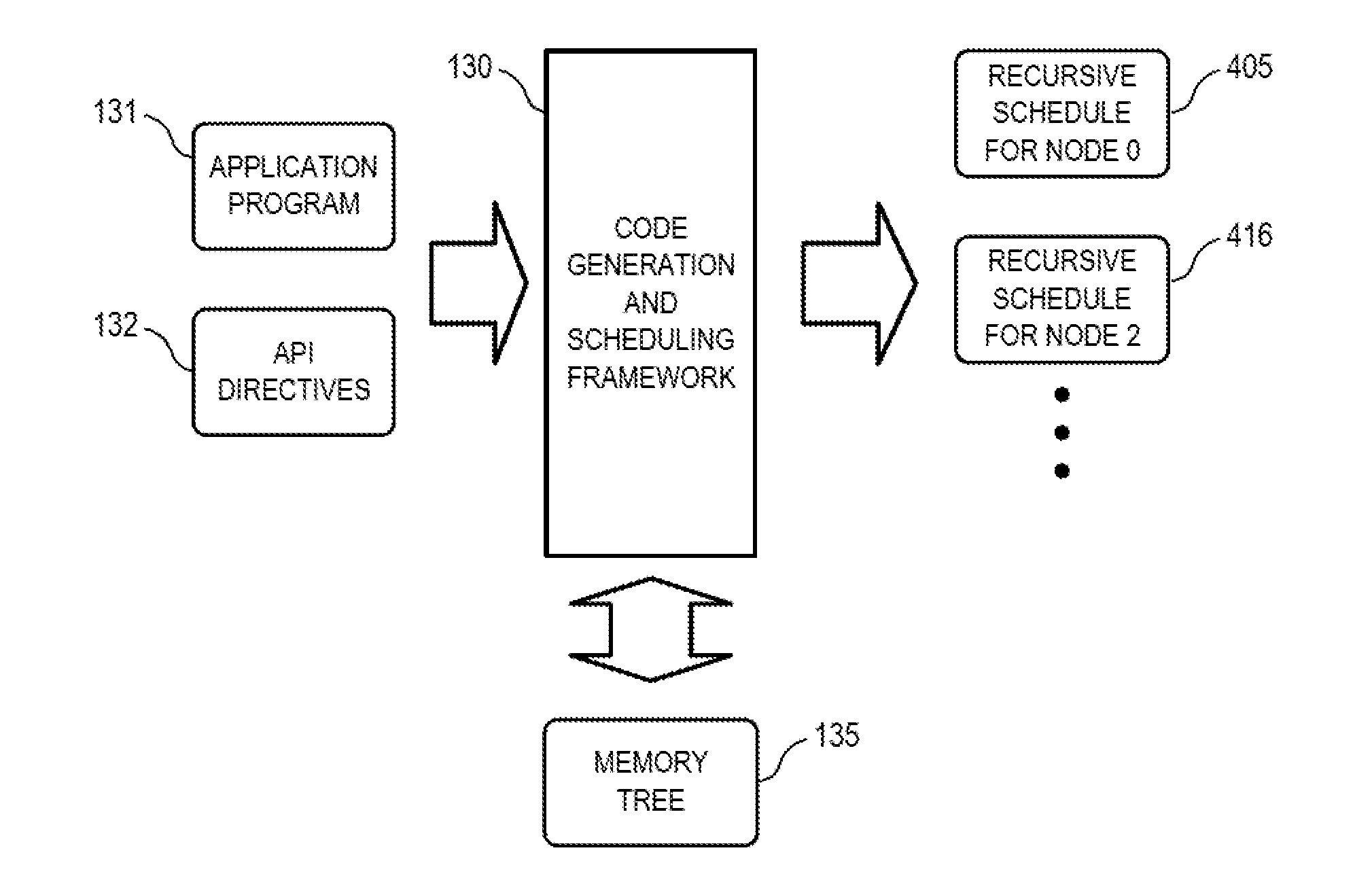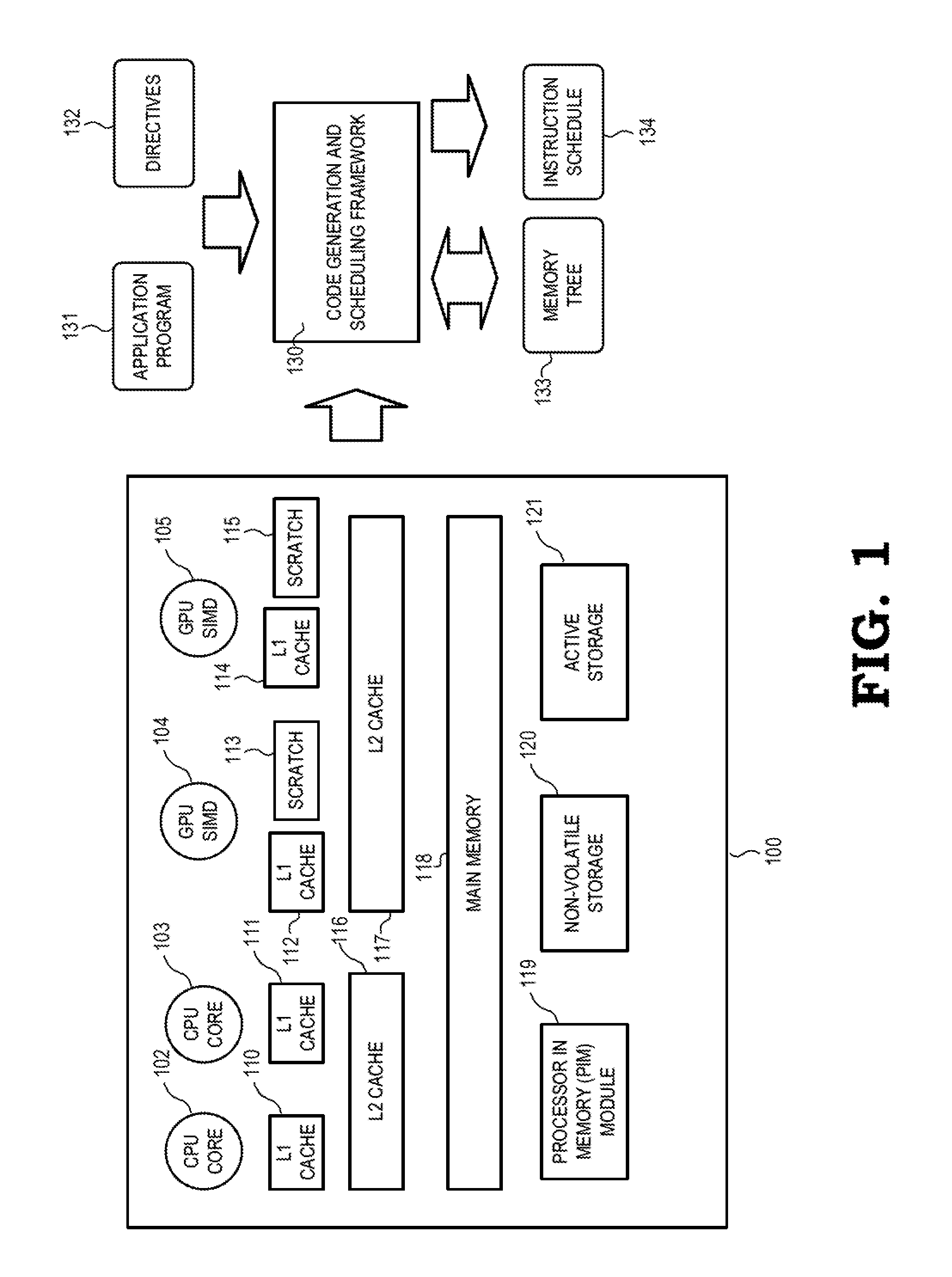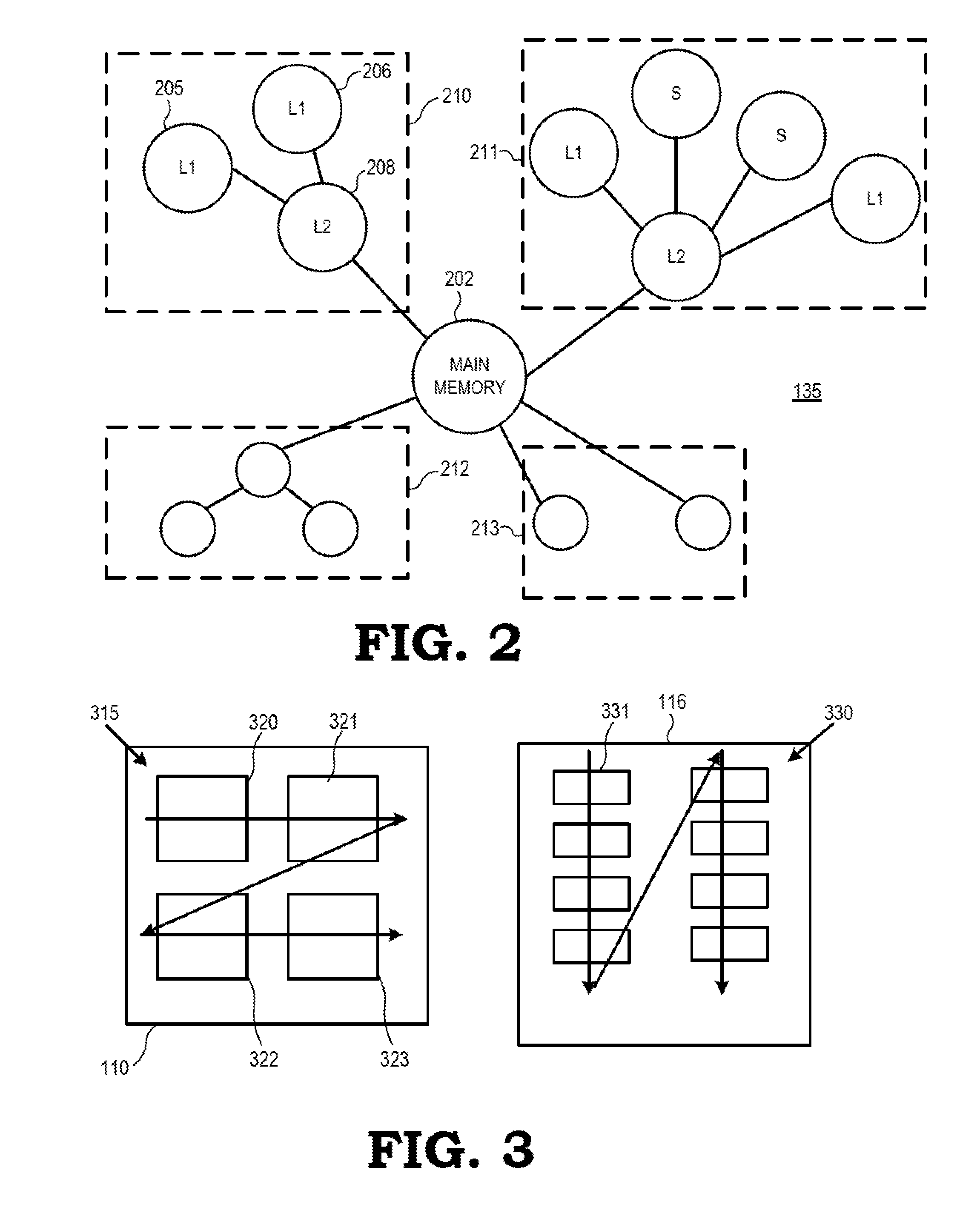Generating a schedule of instructions based on a processor memory tree
a technology of processor memory and schedule, applied in the field of processors, can solve the problems of consuming more power, memory access, and memory hierarchy, and achieve the effect of reducing the number of processors
- Summary
- Abstract
- Description
- Claims
- Application Information
AI Technical Summary
Benefits of technology
Problems solved by technology
Method used
Image
Examples
Embodiment Construction
[0012]FIGS. 1-6 illustrate techniques for employing a memory tree and a code generation and scheduling framework (CGSF) to enhance processing efficiency at a processor employing memory modules of different topologies. The memory tree is a data structure having a plurality of nodes, with each node corresponding to a different memory module, memory cluster, or other portion of memory. The CGSF employs the memory tree to expose the memory hierarchy of the processor to a computer programmer or otherwise allow a program to access different memory modules in different ways. For example, the computer programmer can employ compiler directives to identify nodes of the memory tree and to establish data ordering and manipulation formats for each node. Based on the directives and the memory tree, the CGSF generates schedules of instructions that, when executed at the processor, enforce the data ordering, decomposition, and manipulation formats. This allows the computer programmer to ensure that...
PUM
 Login to View More
Login to View More Abstract
Description
Claims
Application Information
 Login to View More
Login to View More - R&D
- Intellectual Property
- Life Sciences
- Materials
- Tech Scout
- Unparalleled Data Quality
- Higher Quality Content
- 60% Fewer Hallucinations
Browse by: Latest US Patents, China's latest patents, Technical Efficacy Thesaurus, Application Domain, Technology Topic, Popular Technical Reports.
© 2025 PatSnap. All rights reserved.Legal|Privacy policy|Modern Slavery Act Transparency Statement|Sitemap|About US| Contact US: help@patsnap.com



